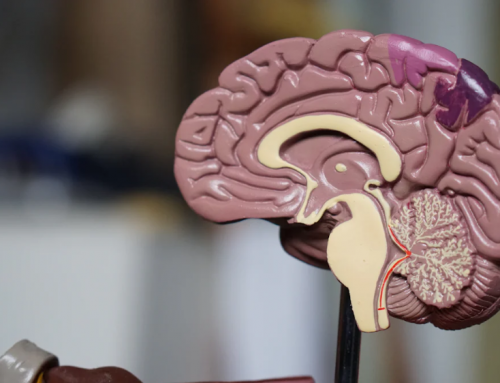Carnosine is known scientifically as beta-alanyl-L-histidine. It is composed of one molecule each of the amino acids histidine and beta-alanine and is therefore known chemically as a dipeptide. The L form, or isomer, of carnosine, is biologically active in humans. L-carnosine is generally found throughout the bodies of animals, although is most concentrated in the brain and muscles.
Most people only pay attention to the medicinal and health effects of L-carnosine.
L-carnosine is a dipeptide with strong antioxidant and anti-glycation activities; blocks non-enzymatic glycosylation and protein cross-linking induced by reactive aldehydes.
Do you know anything else about L-Carnosine?
Maintains the brain’s biochemical functions
Protects brain chemistry in diseases that lead to the overproduction of free radicals
Rejuvenates aged human cells in culture
Increases the lifespan of the cells
Restores the youthful appearance and growth pattern of cells approaching aging
Protects against the toxicity of metals
Chelation of copper and zinc
Naturally protects against the toxicity of copper-zinc in the brain
Copper-zinc chelators dissolve the Alzheimer’s glands
Prevents amyloid beta cross-linking in Alzheimer’s glands
Effect of carnosine – The super peptide
Safe, naturally present in foods and the body
Versatile antioxidant and aldehyde scavenger
Carnosine protects against free radicals (antioxidants)
First, it is an antioxidant that protects our cells from free radical damage. Applied together with vitamin E and other antioxidants, it has optimal effects.
Carnosine extends the lifespan of the cells (glycosylation)
Second, it can reduce the destruction of valuable proteins and DNA by sugar molecules, a process is known as glycosylation. The significance of this process has only recently been recognized.
Abnormal combinations of sugar and proteins are very toxic and contribute to several age-related diseases such as diabetes, heart disease, stroke, Alzheimer’s, dementia, and skin aging. Carnosine can help prevent damage from glycosylation, rid the system of abnormal substances and make it work optimally.
Carnosine diverts toxic metals out of the body (chelation)
Third, it binds toxic metals – it reacts with toxic by-products of our metabolism and eliminates them from the body. It stabilizes the cells, makes them more resistant to injuries, and strengthens the immune system.
Other benefits of carnosine
Carnosine is said to offer many other benefits, which include: anti-aging, longevity, skin rejuvenation, muscle aging, muscle dysfunction, sexual potency, cataracts, diabetes, cardiovascular, neurological, and mental illnesses, and other health benefits.
Carnosine for energy and endurance
Carnosine has been administered to Russian athletes and swimmers for years and provides remarkable energy and endurance benefits, with many users reporting a noticeable daily surge in energy.
Carnosine – Anti-aging from the inside out
One of the reasons why older people and animals look different from younger ones has to do with the damage and change in proteins in the body. Proteins are responsible for the functioning of all living organisms. Damage to these proteins, therefore, has a dramatic effect on all body functions and also on appearance.
Carnosine reacts with the carbonyl group and forms an inactive protein-carbonyl-carnosine adduct, which protects the proteins and reverses denaturation.
In sports and bodybuilding, carnosine is involved in the detoxification process of the reactive aldehydes from lipid peroxidation, which develop in the skeletal muscles during physical exertion. Carnosine, therefore, protects the skeletal muscles from injuries, increases muscle strength, and accelerates recovery after a strenuous training session.
Carnosine is the most important new anti-aging food supplement
Carnosine is poised to become the most important new anti-aging food supplement on the market. It is a naturally occurring amino acid that was discovered more than 100 years ago.
Although it has been used in Russia for many years, its specific anti-aging effects have recently caught the attention of Western researchers.
Carnosine occurs naturally in healthy muscles, the heart, brain, liver, kidneys and other tissues. The muscles contain around 20 μmol/g dry weight. The more carnosine meat contains, the longer its shelf life since carnosine – a fantastic antioxidant – prevents it from going rancid.
Carnosine acts together with other biological antioxidants, e.g. vitamin E and vitamin C, zinc, and selenium, and reduces their consumption in tissues. People with a minor vitamin E deficiency consume more carotene than normal. It is emphasized that a large part of the population suffers from a vitamin E deficiency, which has been proven by worldwide epidemiological studies.
In the human body, the enzyme carnosine synthetase forms carnosine from the amino acids alanine and histidine. This reaction mainly takes place in the brain and muscles. Another group of enzymes, called dipeptidases or carnosinases, deactivates carnosine in the blood and other tissues.
Meat is the main food source of carnosine. High doses of carnosine are necessary for a therapeutic effect because the body naturally breaks down carnosine through the enzyme carnosinase. The consumption of carnosine from food is 30 to 70% (depending on the amount of different amino acids in the meat), and that of pure L-carnosine is higher than 70%.
Much of the intake takes place in the small intestine (in the jejunum, but not in the ileum). Carnosine is transported from the blood to the muscles, the brain, and other tissues. Human plasma does not contain measurable amounts of carnosine – in other words, a possible deficiency can’t be determined by a blood test.
If you need to supplement L-carnosine. SRBio can provide it for you, please contact us and tell us your detailed needs. SRBio will provide you with the most suitable L-carnosine.





